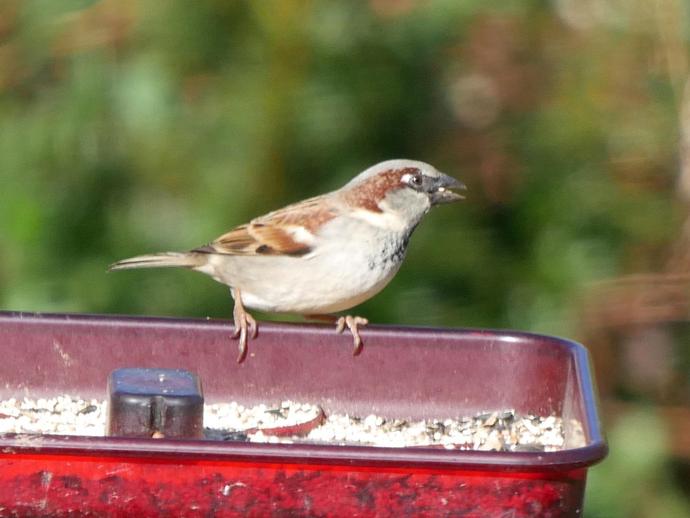February 24, 2021
Ben here with today's edition of #BenInNature presented by our friends at Carter Bank & Trust!
The house sparrow (Passer domesticus) is a common sight throughout the U.S. -- so much so that you might be surprised to learn that it's not native to the U.S.! Believe it or not, this little guy is the single most widely distributed wild bird on the entire planet!
House sparrows are native to the Middle East, Europe, and Asia, but through a combination of deliberate introductions and natural dispersal, they can be found in most of North America, Central America, southern South America, parts of Africa, Australia, and New Zealand, among many other locations.
Why are house sparrows so successful? One of the main reasons is that they're very adaptable, and they're particularly well-adapted to living amongst humans. Here in the U.S., they first took hold in New York City in 1852 when they were intentionally released to help control the destructive caterpillars of the Linden moth (Ellida caniplaga). As with so many introductions of non-native species, the house sparrows are likely a bigger nuisance than the pest they were supposed to control.
One of the biggest issues with house sparrows is that they have a tendency to compete with native birds for nesting sites. They will build their nests in the eaves of homes, but they seem to prefer to build their nests in cavities in hollow trees. Those sites are highly prized by bluebirds and other native birds, and the explosion of house sparrows in the U.S. has likely contributed to the decline of other cavity-nesting species.
While these sparrows do eat insects, the largest portion of their diet consists of seeds. However, they're pretty opportunistic, and you'll likely see them in the parking lot at your local fast food place picking over some wayward french fries.
ABOUT #BenInNature
Social distancing can be difficult, but it presents a great opportunity to become reacquainted with nature. In this series of posts, Administrator of Science Ben Williams ventures outdoors to record a snapshot of the unique sights that can be found in the natural world. New updates are posted Monday - Friday, with previous posts highlighted on the weekends. This series of posts is made possible thanks to the support of VMNH Corporate Partner Carter Bank & Trust (www.cbtcares.com)
NATURE PHOTO IDENTIFICATIONS
If you discover something in nature that you would like help identifying, be sure to message us right here on Facebook with a picture (please include location and date of picture) and we'll have our experts help you identify it!

 Hours & Admissions
Hours & Admissions Directions
Directions

